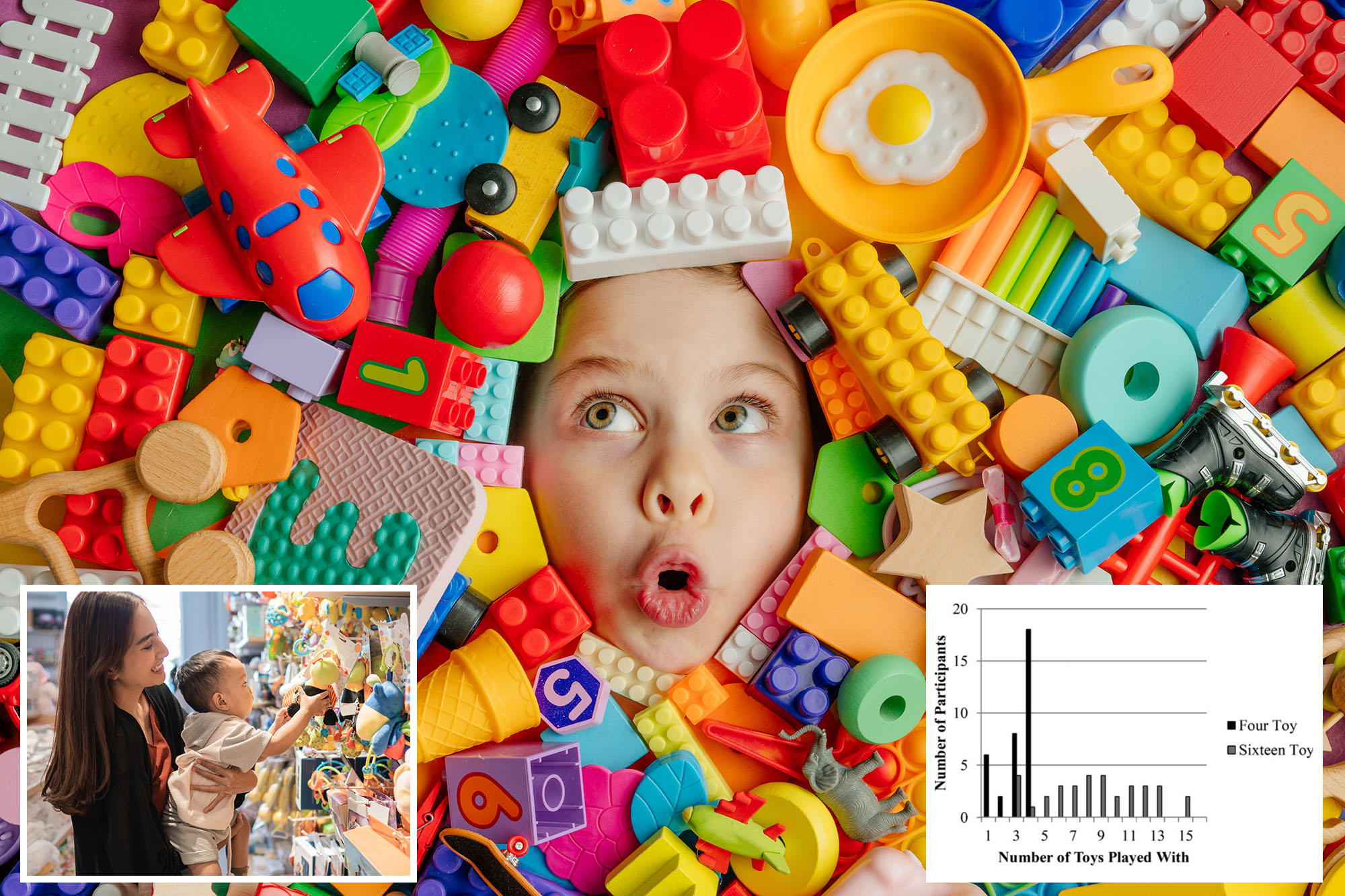
Parents leave the toy line.
It turns out that your toddler does not need a teddy mountain, plastic cars and magnetic cripples – they can only need four toys. Yes, four.
According to Dr. Alexia Metz, a professional therapist and mother of twins, little ones flourish when there less to play with, no more.
“We continue to bring home more and more toys home, thinking that this is the toy that will put my baby on Harvard,” says Metz Today.com.
“But then we don’t see the value in their game because they cannot be organized enough to play.”
Metz led a widely quoted study of 2017 at the University of Toledo, observing Tots between 18 and 30 months in rooms equipped with different numbers of toys.
When the children were left loose in a 16 -option space, it was toy chaos – they flew from the article to the article like overestimated bees in a preschool garden.
“This exploration is so fast that they don’t have time to sit and explore all things one toy can do before they have to move on to another,” says Metz.
But throw that number into just four toys and something magical happened: the children slowed down, engaged deeper and played longer.
“They went and looked at them all, but then they had time to return to every toy,” she explains.
“They sat down and they played with him twice longer, and they did a lot more things with her.”
Instead of jumping from one shiny object to another, children began to collect blocks, push buttons and even plunge into pretensions – the kind that children’s development experts plunge.
“There was that attraction of something else to see. The kids knew they would lose nothing if they sat there for another minute to play with the toy and see what they can do,” Metz adds.
Then why does it work? Fewer toys = fewer distractions.
Toddlers focus better and use their imaginations more when they are not drowning in options.
Something something that Metz saw playing at home as well.
As she raised her twins in an apartment of Agoikagos 1,000 square meters, she says their space forced her to take.
“There was not just space,” she recalls. “My kids had everything they might want or need-and many of them are really great therapist-approved toys is just too much. They can’t calm down and play.”
Now, to be clear: Metz is not telling you to spit your toys bins.
You don’t have to take Kondo all your living room. But you MUST be strategic.
“You can have hundreds of your toys if you have a place to store them so that when a child has time to play, there is only a smaller number available at the moment,” she says.
This means that rotating toys – stuck a few away, then change them again later. It keeps things fresh but manageable.
Tyler Moore, author of “tidy up your life” and the man behind the popular account @tidydad Instagram, swears this approach.
Living with his wife and three girls in a modest Queens apartment, he uses “yes spaces” filled with ready -made toys like dolls and blocks, while rotating in many more messy or more complex completes.
This balance, he says today, allows his children’s imaginations to “run wild”.
Although Metz’s study is old years old, lesson still hits at home: it is not about how many toys your child has – it is how many they see.
Because even the best toy in the world will not cause joy if it is buried under 25 others.
“Know the toys for their short -term value and then pass them,” says Metz.
#toys #happy #expert
Image Source : nypost.com